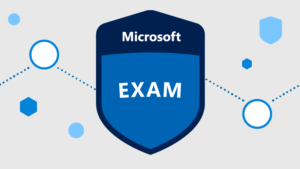
You may be wondering: why should you prefer the Cisco CCNA Routing and Switching certification over other credentials? It is always useful to find out exactly what a certification can offer. This is even more crucial for certifications like CCNA R&S which require a big investment of time and money. Eager to learn more? Read on!
Why Getting CCNA R&S Certification?
There are several reasons that make CCNA a great certification for individuals who want to build a strong foundation for a successful career in networking. These are the three most important advantages:
- Enhance Your Knowledge
You may have years of working experience in the networking sector, but still,you need to enhance your skills to beat the competition. Preparing and getting the CCNA R&S certification can help you with this. The syllabus of Cisco CCNA R&S is designed to ensure that an individual enhances his/her skillset during the preparation process and can perform any networking tasks after becoming certified.
- Show Your Credibility
By acquiring your Cisco CCNA Routing and Switching certification, you’re showing your expertise and credibility to your employer. Many employers around the world routinely use CCNA as a basic criterion for identifying eligible candidates.
- Prepare for the Next Generation of Networking Technologies
The skillset required for performing core networking tasks is evolving as the enterprises gradually migrate towards architectures that are based on controllers. To keep pace with this transition, CCNA Routing and Switching certification equips professionals with the knowledge of foundational technologies as well as ensures that they have the skills needed to adopt the next-generation networking technologies.
Cisco CCNA Routing & Switching Certification Exams
To earn CCNA Routing and Switching certification, candidates need to pass either 200-125 CCNA or 100-105 ICND1 and 200-105 ICND2 exams.
200-125 CCNA
In the Cisco Certified Network Associate (CCNA) Routing and Switching composite exam,candidates need to answer 60-70 questions within 90 minutes. The exam syllabus is divided into 7 topics to facilitate exam preparation. Besides, this ensures that the candidate covers every single topic requiredto familiarize with the foundational technologies and toget prepared for the adoption of advanced technologies as well. The 7 topics covered in this exam are the following:
- Network Fundamentals
This section coverscomparing and contrasting OSI models and TCP/IP models, network topologies, three-tier and collapsed core architectures,as well as TCP and UDP protocols. You should also know how to analyze the effect of cloud resources on network architecture and how to verify, troubleshoot, and configure IPv4 and IPv6 addressing.
- LAN Switching
This section tests the ability of the candidates toverify different switching concepts as well as configure, troubleshoot, and verify interswitch connection, VLANs, STP protocols,andLayer 2/3 EtherChannel. The candidate also must understand the advantages of chassis aggregation and switch stacking.
- Routing Technologies
This domain deals withrouting concepts and interpretation of the components of a routing table. To pass the exam, you should also know how information from different routing sources can populate a routing table, and how to configure, troubleshoot, and verify inter-VLAN routing, IPv4 and IPv6 static routing, multi-area and single-area OSPFv2 for IPv4, multi-area and single-area OSPFv3 for IPv6, EIGRP for IPv4, and EIGRP for IPv6.
- WAN Technologies
This domain tests the candidate’s ability to verify and configure MLPPP and PPP on WAN interfaces. Also, you must be able to troubleshoot, verify, and configurePPPoE interfaces, GRE tunnel connection, andsingle-homed branch connectivity as well as describe the options of WAN topology, WAN access connection options, and basic QoS concepts.
- Infrastructure Services
This section deals withtroubleshooting client connectivity issues involving DNS as well as client- and router-based DHCP connectivity issues. The candidate also needs to know how to verify and configure basic HSRP, DHCP, and NTP operating.
- Infrastructure Security
This section focuses on verifying ACLs, describing threat mitigation techniques and device security, and configuring, verifying, and troubleshooting IPv6 and IPv4 access list, port security, and basic device hardening.
- Infrastructure Management
This section covers topics including troubleshooting network connectivity issues with the help of Cisco IOS tools. The successful candidate should also be able to verify and configure device management, initial device configuration, and device-monitoring protocols.
Instead of taking one exam, candidates can choose to take 100-105 ICND1 and 200-105 ICND2 exams covering the whole syllabus together.
100-105 ICND1
In this exam, 45-55 questions are asked and candidates get 90 minutes to answer them. This exam tests the understanding of the concepts related to networking and routing fundamentals, LAN switching technologies, as well as maintenance and services of infrastructure.
200-105 ICND2
In 200-105 ICND2 exam, 55-65 questions are asked and candidates get 90 minutes to answer them. This exam tests the knowledge and skill of the candidates related to WAN and LAN switching technologies, routing technologies, as well as maintenance and services of infrastructure.
The contents covered in the topics of 100-105 ICND1 and 200-105 ICND2 exams are similar to the ones covered in 200-125 CCNA.
None of the CCNA exams has a specified passing score as it is set with the help of statistical analysis and is subject to change. Candidates receive a score report with the passing score for the given exam after completing the test.
Preparing for the exam
The field of network engineering is evolving faster than ever. To ensure thatcertified individuals are prepared for the adoption of new network technologies, Cisco continuously updates their exam syllabus. Some of the included topics are fairly complex. That’s why a solid preparation is mandatory before taking any of the certification tests.
ExamSnap website can help you prepare yourself for the exam. ExamSnap has three different premium bundles for the threetests of CCNA Routing and Switching certification. The premium ExamSnap bundle for 200-125 CCNA contains 1125 questions & answers, a training course of 150 lectures, and a study guide of 1610 pages. The premium bundle for 100-105 ICND1 contains 675 questions & answers, a training course of 91 lectures, and a study guide of 964 pages. ExamSnap premium bundle of for 200-105 ICND2, in its turn, contains 625 questions & answers, a training course of 66 lectures, and a study guide of 624 pages.
Conclusion
CCNA certification may seem hard to achieve at the beginning. But with a bit of self-belief, determination, and hard work, it is possible to getcertified on the first CCNA R&S, you’ll not only achieve a powerful professional credential but also become a part of anelite community which will ultimately help you to advance yourcareer.
- What Are Social Casinos? - Feb 22, 2024
- From Slots to Screens: Navigating the Diversity of Online Casino Entertainment - Feb 14, 2024
- The 5 Best Gambling Video Games - Feb 12, 2024













